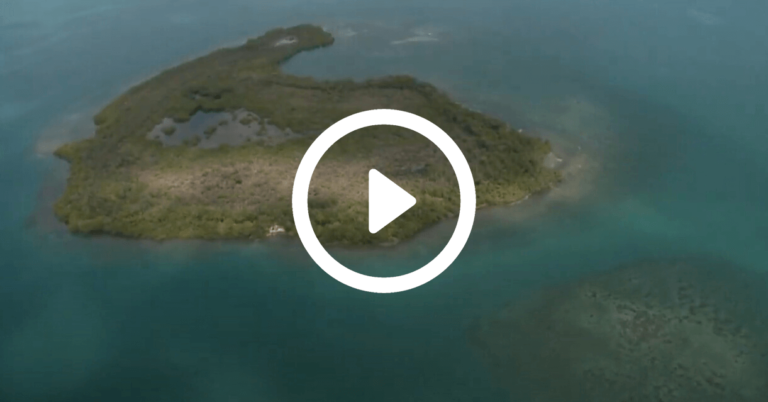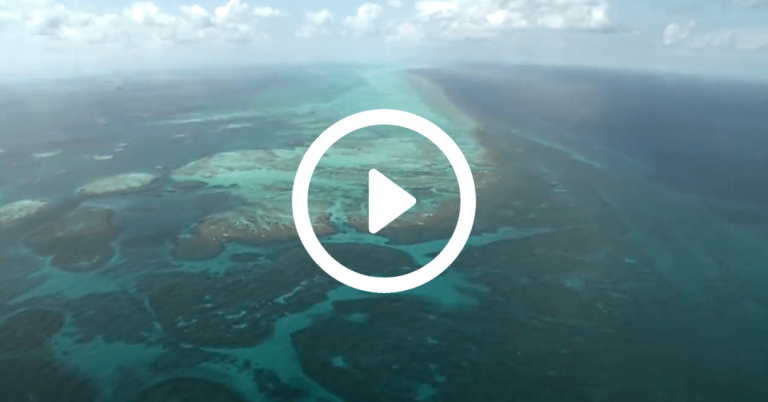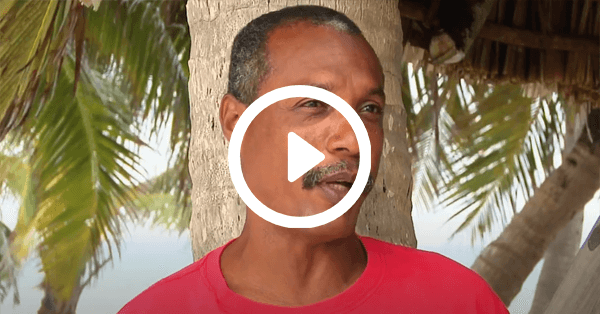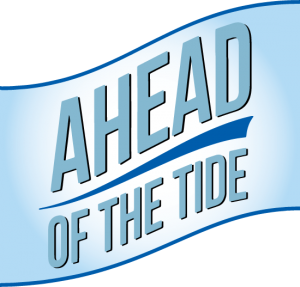Reefs for People
The Mesoamerican Reef region lies within the Caribbean Sea and touches the coasts of Mexico, Belize, Guatemala and Honduras. It contains the largest barrier reef in the Western Hemisphere, stretching nearly 700 miles from the northern tip of the Yucatan Peninsula down through the Honduran Bay Islands. Dazzling arrays of different types of coral form this underwater wilderness, and provide homes and food to hundreds of fish species, marine turtles, and sharks. Along the shores, mangroves provide habitat for fish and shorebirds as well as protect coastal areas from the damage associated with hurricanes and strong storms.

Mangroves
Mangroves play a key role maintaining fisheries, as well as providing services for tourism and shoreline protection. In spite of their indisputable economic, social and environmental importance, throughout Belize mangroves are getting cut and dredged.

Punta Gordo Co Management
This clip shows us why co-management works in Belize, which players are involved in Punta Gorda and why co-management is necessary to successfully maintain the fisheries in Belize.

Ridge to Reef
This short clip contextualizes how land activities, particularly agriculture, needs to be properly regulated and carried out to minimize their impact on the reef and even on our own bodies.

Our Reef The Belize Barrier Reef
A few facts you might not know about this impressive jewel!

10 Ways You Can Help the Reef
Learn about ways you can help protect and revitalize our barrier reefs.

Laughing Bird Marine Protected Area
This short video tells the story of how Laughing Bird Caye National Park in Belize came to be and how it is now perceived by the local population, told by the very people who brought the issue of protection and sustainable development in this area to the government.
The scenic beauty of the region’s coastal areas makes it a prime tourist destination, which can put pressure on fragile reef environments. Further inland, rich soils attract large-scale agriculture, whose run-off can severely impact reefs. And increasing sea levels and water temperatures from climate change threaten corals and other marine animals such as turtles, as well as the communities that depend on the reef for their livelihoods and food security.
The conservation community in Belize is keenly aware of theses threats because they have conducted hundreds of scientific and research studies for more than 30 years. Funders and local organizations have been supporting research to learn year-in and year-out that the health of the reef continues to deteriorate. In 2008, Healthy Reefs for Healthy People Initiative developed the first comprehensive Report Card on the overall health of the reef. The report cited much of the Belize Reef in poor condition and that critical levels could be reached within a matter of years if deliberate conservation action did not occur.
With funding from the Oak Foundation and Conservation International’s Marine Managed Areas Science program, CAVU, together with local and international partners has designed a project called Reefs for People to bring to scale what scientists and fisherman already know about the declining health of the reef and make it known to all Belizeans. The goal is to generate the political will and the desire of the people to create the laws that will protect and restore the reef for future generations. As the backbone of the Belizean economy, the reef vitally needs the support of Belizeans to ensure the health of this critical ecosystem.
The Reefs for People project has three main activities:
- GPS embedded, geo-referenced aerial photography of reefs, mangrove habitat and key coastal areas
- Development of educational film tools to raise awareness about reef health and policy/action steps
- Educational Campaign targeting politicians, coastal communities, businesses and marine area managers about the need to implement specific policies and recommendations impacting reef health
CAVU will work as a facilitator of conservation messaging, assisting the four main partner organizations in bringing science to action by creating educational tools and conducting outreach through local workshops, seminars and media outlets, reaching specific and varied audiences. The main partners are: CI-MMAS, HR4HP, CZMAI and the Association of Protected Areas Management Organizations (APAMO). Furthermore, R4P will indirectly support and work with local MMA mangers and other organizations such as World Resources Institute, Belize’s Department of Fisheries, Coral Reef Alliance and Environmental Defense Fund to achieve the ultimate goals of turning science into action and leveraging existing efforts.
The expected outcomes of the project are:
- Create political will to commit to the development of a nationwide coastal zone management plan which will determine where and how tourism related development, residential sites and agriculture activities will take place.
- Implementation of a stronger mangrove protection law.
- Ratification of the co-management agreement law.
- Groundwork for the expansion of increased no-take zones from current 3% of waters to 10%.



